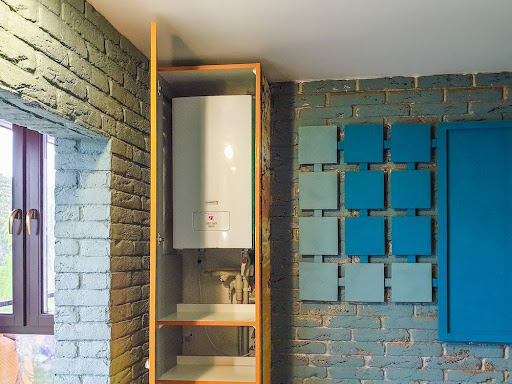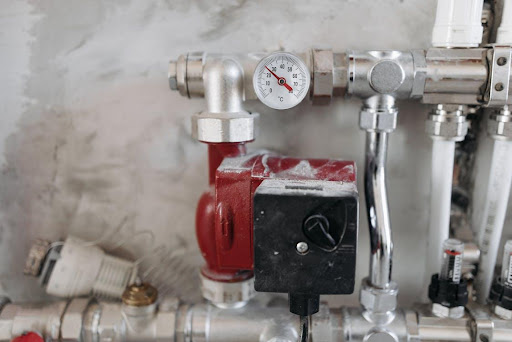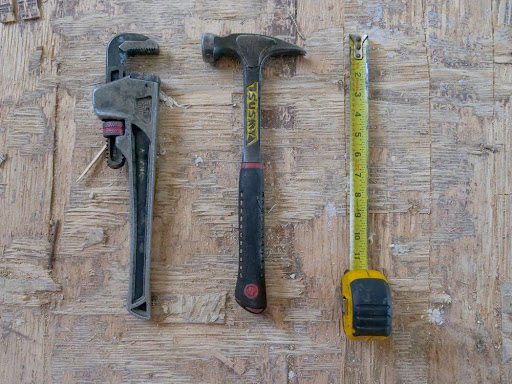
The temperature & pressure relief valve (TPR valve) is a water heater’s most important safety feature. As the name suggests, the temperature & pressure relief valve keeps the pressure and temperature inside your water heater from getting too high.
Your water can explode if its temperature and pressure are too high. And Nest DC warns an exploding water heater will not only damage your home, but it could also cause serious injuries to you and your family. The TPR valve ensures that this does not happen.
When temperature and pressure start to climb to dangerous levels inside a water heater, the TPR valve opens to discharge some of the water and release the excess temperature and pressure. The valve closes automatically after the extra heat and pressure are discharged.
Because of its role in your safety and the function of your water heater, the TPR valve should be tested at least once a year. Testing the TPR valve will let you catch malfunctions before they become problems that lead to nasty emergencies.
To test the TPR valve, locate and open the device. If the valve is working, you should see hot water flowing from the pipe attached to the valve. Here is a simple explanation of how to find and open the temperature and pressure relief valve on your water heater.

How to locate the TPR valve
Finding the temperature and pressure relief valve is accessible regardless of whether you have a gas or electric water heater. In most water heaters it is located near the top of the unit. Look for a downward-pointing small pipe attached to the side of the water heater.
This discharge pipe should run from the top of the water heater to its base. A lever that moves up and down is attached to the top of the pipe. If you have trouble locating your water heater’s temperature and pressure relief valve, please refer to the manual.
How to open the TPR valve
Opening the TPR valve is as simple as lifting the lever on the discharge pipe of the water heater. Raising this lever will cause hot water to flow from the open end of the discharge pipe or drain tube. Before you lift the lever, place a bucket beneath the discharge pipe.
If no water comes out of the discharge after you lift the lever, the TPR valve is not working. If the pipe discharges hot water as expected, push the lever down to close the valve. The water should stop flowing entirely.
If there is a trickle of water after you close the valve, this is a sign that the TPR valve is leaking. It is also not a good sign if the TPR valve is stiff. A leaky, jammed, or stiff TPR should be replaced immediately to protect your water heater and yourself.
How to replace a faulty TPR valve
Replacing a faulty TPR valve is easy. If you are comfortable working with water heaters, you can do this replacement yourself. If not, please let a professional plumber handle any water heater repairs. Here is how to replace a TPR valve.
You will need a screwdriver, adjustable wrench, garden hose, Teflon tape, wire brush, and a new relief valve matching the old valve’s thread size and PSI ratings. You may also need a five-gallon plastic bucket to catch water from the discharge tube.
First, to replace the TPR valve shut the power supply at the breaker (for electric water heaters) or turn off the gas supply (make sure the lever is perpendicular to the gas supply pipe). Set the water heater to the pilot setting and turn off the cold water supply to the water heater.
Attach a garden hose to the drain valve at the bottom of the unit and open a hot water faucet to let air into the water heater. Open the drain valve and drain 10-15 gallons of water from the tank. The water inside the tank is low enough when water doesn’t come out of the discharge valve after you open the TPR valve.
Remove the drain tube attached to the TPR valve. Use the wrench to unscrew the relief valve. Clean the thread with a wire brush before inserting the new TPR valve. Apply Teflon tape on the valve before you screw it into its place.
Conclusion
How often should you open your TPR valve to test it? Pushing the TPR valve once a year should be enough for most homes. But you may want to try it more often if you recently had issues with the water heater. Also, if the issues with your water heater persist even when the TPR valve is working or after you replace it, you should contact a professional plumber for assistance.
